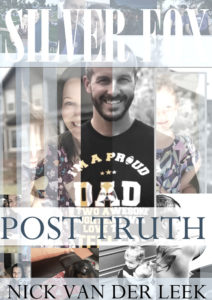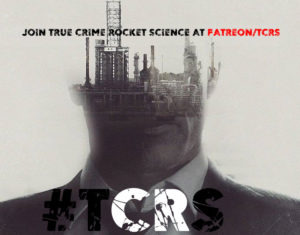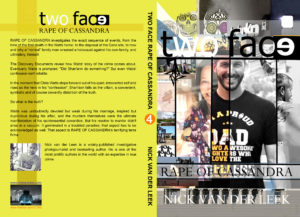For those new to TCRS and perhaps those who have not read a Rocket Science book, “Intertextuality” [with a capital “T”] is a TCRS-ism that refers to the relationship between crimes, criminals and potentially the fate of the victims. In some circumstances it can also refer to the possibility that one crime leads to, inspires, or informs another crime either further down the line or contemporaneously.
If that sounds confusing, don’t worry, it’s easier to understand Intertextuality by feeling our way through practical real-life examples than pontificating with definitions and semantics. So let’s get started.
The Joana Cipriano case predates the Madeleine McCann case by less than three years. The geographic distance between the two crimes is just eleven kilometres [seven miles].
The circumstances of 8-year-old Joana’s “disappearance” are as follows, according to the generic version on Wikipedia:
Joana Cipriano, eight years old at the time, was last seen at around 8 pm on the evening she disappeared, after being sent to buy milk and a tin of tuna from a local store. A neighbour saw her around 200 yards from her house, walking back from the store. Her mother, Leonor Cipriano, launched a local campaign to find her daughter, distributing posters around the neighbourhood.
The prosecution argued that Joana was killed because she had seen her mother and João Cipriano, her mother’s brother, having [incestuous] sex. Leonor confessed to killing her daughter after nearly 48 hours of continuous interrogation. Her brother confessed to having assaulted Joana, and said he had cut her body into small pieces and placed her inside a refrigerator, which was put inside an old car that was taken to Spain to be crushed and burned. When he was asked if he had sexually abused Joana, he said, “I did not harm her – I only killed her.”

There’s a lot to take out of these two brief paragraphs. In sum:
- Joana was eight-years-old [twice as old as Madeleine].
- Last seen in the evening at around 20:00 [this corresponds roughly to the time Madeleine was last seen, in the relatively early evening].
- A neighbour was an important eyewitness [ditto Mrs Fenn and her niece Carol Tranmer in the McCann case].
- Joanna was last seen walking back to her home, not away [Tannerman was alleged to have been walking towards Murat’s home carrying a child, but in fact Dr. Julian Totman was walking in the other direction, towards Block 4.]
- One of the main suspects launched a campaign for her child, but was later charged with her murder and contriving to make it appear as if her daughter had disappeared without her mother’s knowledge.
- One of the main features of the misinformation campaign was putting up posters all over the neighborhood. One might scoff at the trickery involved, but each poster proclaiming the child as missing was essentially an advertisement proclaiming the myth that a) she was still alive and b) that the mother wasn’t implicated. Since the child was dead, and the remains taken care of, there was no need to be concerned that someone might actually come forward with information.
- The prosecution didn’t argue for an accidental death, or an abduction, or a disappearance, but murder.
- The mother ultimately confessed to killing her child, but did so under duress.
- The girl’s uncle admitted to assaulting the child and dismembering her body. In the concealing, covering up and destruction of the child’s body, both parties appeared to have an equal or substantial “stake”.
- A refrigerator is noted as a temporary storage device for human remains. [Joana was killed in mid-September, when it’s still relatively warm in the Algarve].
- After a limited period, the body was transferred from the refrigerator to an old vehicle.
- The remains were then removed from the area entirely.
- The prime suspect made an ironic remark that he “only killed her” but didn’t harm her.
It’s tempting to want to sticky-tape many if not all of the idiosyncrasies of the Cipriano case onto the McCann case, particularly the vivid scenarios involving the refrigerator and the secret movement of the little girl’s remains to Spain. But we need to be careful how we apply what we know in one case to another. Certainly, some areas have Intertextual Criminal overlaps, and some aspects of the whole crime feel generally very Intertextual, don’t they?
But it requires specialized True Crime Rocket Science to know what to apply and what not to. Netflix provides some useful information but it shouldn’t be treated as gospel, nor dismissed entirely as bunkum. Reality lives somewhere in-between.
Let’s start our analysis with Goncalo Amaral.



I like Amaral. He’s a solid dude [despite the aspersions cast in the documentary, Amaral wasn’t present at the time of the alleged beating]. And he has some snazzy insights into the McCann case.
He’s entitled to his opinion, of course, that the Cipriano case and McCann case aren’t similar. It’s possible that he sees a distinction in the fact that Joana was murdered, and because there was an incestuous spiel playing out he believes these shouldn’t be conflated with the McCann case. Point taken senhor Amaral.
The Rocket Science position is different. Yes, agreed, Madeleine wasn’t murdered – not by either of the parents. There was no direct intent or Dolus as the legal term is applied. As for some kind of sexual spiel, there does seem to be the possibility at least of a paternity issue. I don’t want to say sexual issues are irrelevant, though I can understand why Amaral excludes them. I don’t want to conflate this sexual miasma with anything as overt as pedophile gangs or traffickers, however.

Rocket Science is content to aver that the sexual dimension in the McCann case is somewhat unknown, and if we invoke merely the IVF scenario, we can see there is some idiosyncrasy hiding in plain sight. What more than that? Well, there is more to say but this post is about Intertextuality, so let’s stick to our brief.
The area that Amaral is missing – to my mind – isn’t even highlighted in the bullets above. And this area is a key Psychological Intertextuality – an overlap – between the two cases. I don’t want to be too on-the-chin about it, but the motive in the Cipriano case is the covering up of a taboo. We know from an eyewitness that the child was seen walking home relatively late in the evening, and perhaps arrived home either unexpectedly or earlier than expected.
It’s also possible the uncle was abusing the little girl if he was having sexual relations with her mother, and the bloody dismemberment of her corpse suggests a kind of rough familiarity with body parts. I’ll expand on what I mean by that in a moment.
It may seem a giant leap, and perhaps it is a giant leap, but it’s possible a similar taboo exists in the McCann dynamic. Now, the circumstances are clearly different in a scenario of accidental or negligent death. In that case [if that is the case] the child’s death is a triggering factor, leading to a reaction. In the Cipriano case, the incestual act isn’t the triggering factor, but rather the child witnessing it.

So the question of Intertexuality then is in a situation where Madeleine was found to have died, was the taboo triggered by a sense of being imperiled by who might witness what they did [effectively] to their child?
We see in the Cipriano siblings and the McCann parents a shared sense of symbolic and biological connection to the victim. They are both directly responsible for the care and safety and guardianship of the child, and yet their own status in some way interferes with this guardianship.
I also want to come back to the issue of the sexual miasma. Clearly in a scenario where the siblings were involved in a taboo act, both adults don’t have an identical blood relationship to the child. One adult is the biological mother, it is true, but the other is less-the-parent to the child. This mismatch in affiliation appears to be psychologically significant, and plays into the criminal psychology of both parties – apparently. The question then arises – to what extent can these mismatches be applied to the McCanns in this hypothesis, if at all? Is one adult more biologically connected to the child than the other? What actually happened, what lengths did the parents go to, during their efforts to produce a viable IVF result?








We can also potentially extend the taboo aspect to others in the group of seven, four on whom were doctors: Dr. Gerald Payne. Dr. Fiona Payne. Dr. Matthew Oldfield. Dr. Russell ‘O Brien. Of the remaining three Jane Tanner [O’Brien’s partner] was a marketing manager, and Oldfield’s wife Rachael was a lawyer. If we add the McCann couple to the Tapas Seven there are six doctors in the group, in total.
There’s plenty more to say on the subject, but I want to stick to the brief and move on to another possible Intertextual aspect, the refrigerator.









The docuseries seems focused in episode six on maligning Amaral. He’s portrayed as a corrupt cop at best, and a brutish thug at worst. They hold up the absurdity of the refrigerator scenario as the reason Amaral’s investigative nous is off.
The Rocket Science position is that it’s not as simple or straightforward as the Netflix folks would like us to believe. On the one hand, yes, certainly, the eight-year-old’s body was probably not going to fit into the confined space of a small refrigerator very easily. If the Chris Watts case is worth invoking here, for just a single Intertextual aspect, it was found that two children [three-years-old and four respectively] were stuffed through an orifice eight inches wide.
Although the experts “predicted” the hole was too small to fit the bodies of the poor little girls, they were wrong. Somehow they did fit.
That’s not to say Amaral is right, or wrong, just that when it comes to fitting human bodies into small spaces, there’s no “expert” truth.
In the Courtney Pieters case, the three-year-old victim was sexually assaulted and stored in the perpetrator’s refrigerator, in his room.
The Refrigerator Theory has led to an unfortunate conspiracy theory, which is that Madeleine actually died a week earlier and was kept in a neighbor’s refrigerator during this time, and disposed of at leisure [not necessarily when the alarm was raised on the night of May 3rd]. I won’t attempt to address those concerns here, except to note it’s not the position of TCRS.
Some of those who subscribe to the Refrigerator Theory in the McCann case also conflate this conspiracy with a pedophile theory, feeling that a group cover-up would have made it possible to pull of moving the girl’s remains to a refrigerator in some other location.
What I will say is there’s reason to suspect Madeleine’s remains were in Praia da Luz for some weeks before they were transferred somewhere else. So some arrangement had to have been made to “manage her remains” if that makes sense. The foremost concern [assuming this contention is true] would have been odor. A refrigerator would address that problem, but I nevertheless don’t consider it a viable theory.
In the Casey Anthony case Caylee’s skeletonised remains were discovered after being gone for six months, and when they were found, they weren’t recovered by smell but by sight.
So what did happen to poor eight-year-old Joana?






As mentioned above, episode six of the documentary appeared to be focused on character- assassinating Amaral. Whether Amaral threw a suspect down stairs or not, whether he did naked cartwheels on a beach, whether he caught a marlin once upon a time in Tahiti, none of these anecdotes should distract us from the facts of the case.
Amaral certainly didn’t kill or abduct Madeleine, so we shouldn’t make an investigation into Madeleine McCann an investigation into the lead detective. The fact is, Amaral’s scenario in the McCann case is basically cogent, except for the refrigerator business.
Probably, unfortunately, poor Joana’s remains never made it to Spain. Her killers were poor, and simple-minded. Their methods, similarly, were simple, even trashy.
The little girl’s remains were probably eaten by pigs. Unfortunately there is Intertextuality for this too, and in the same Intertextual reference case there is also a mismatch between the biology of the parents of the seven-year-old child, Adrian Jones.

We may ask why Joana’s killers “confessed” they put her body into a car and transported it to Spain if it wasn’t true? Why confess to a lie when you’ve been found guilty anyway? Well, even murderers have pride, and honor. Admitting to moving remains somewhere by car minimises the more monstrous alternative – feeding the flesh of one’s one child to hungry pigs in a farmyard pigsty.
In the Jones Case there’s also an extensive pattern and prolonged period of neglect and abuse to take note of, from the boy child’s own stepmother, including anecdotes of torture posted onto Facebook. In other words, the neglect isn’t incidental or accidental, it’s systematic and it builds up to murder. In this respect the death of the child isn’t random or unexpected but an entirely predictable psychological spiral into ultimately the complete destruction not only of a living child, but even of their remains.













































Recent Comments